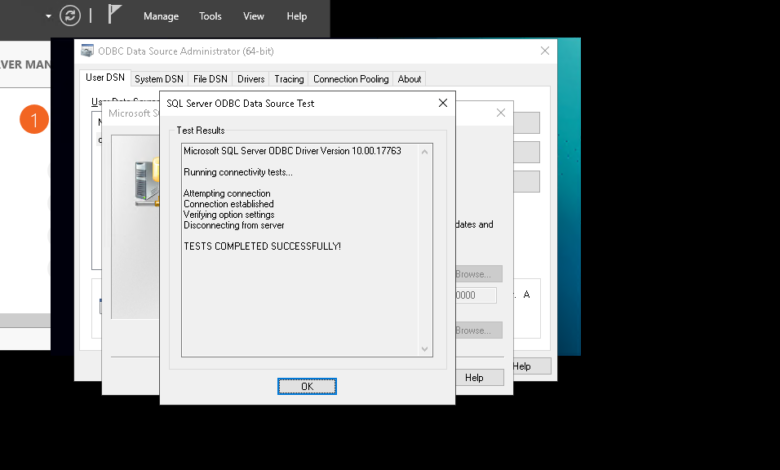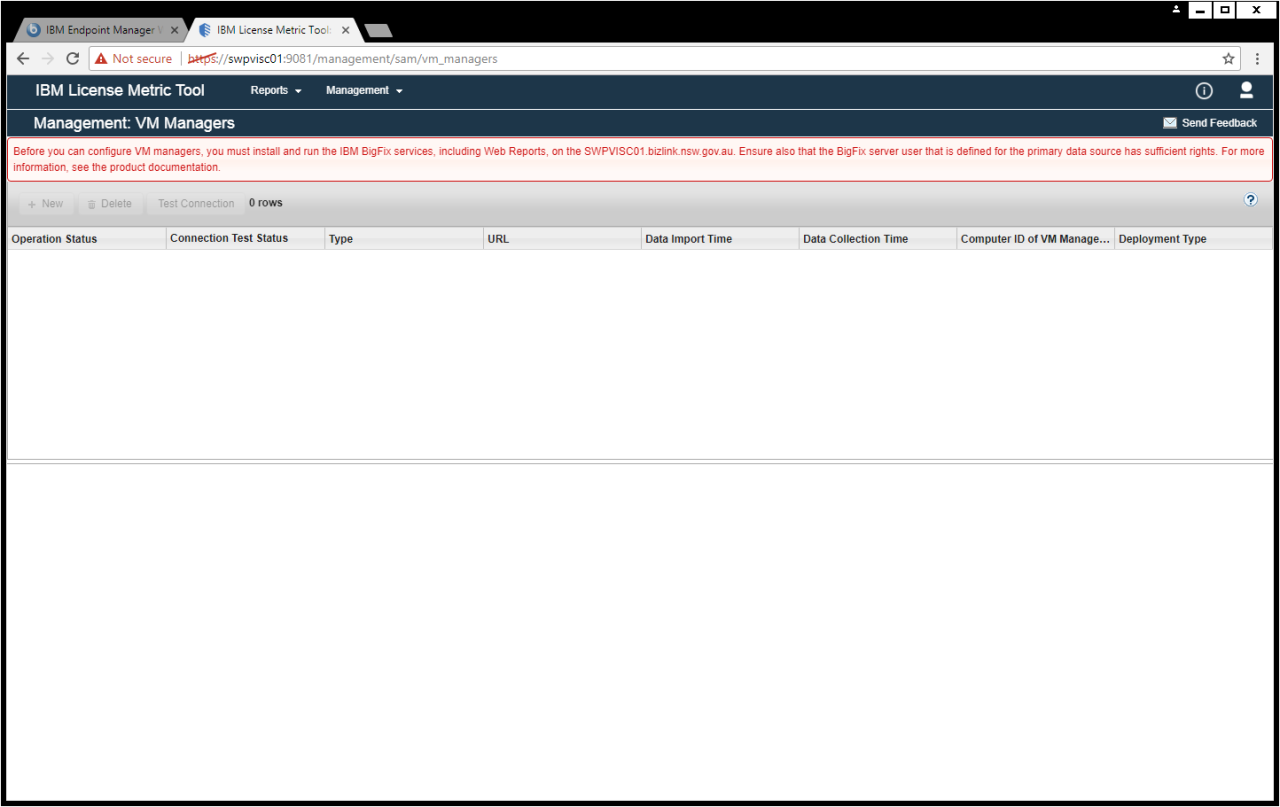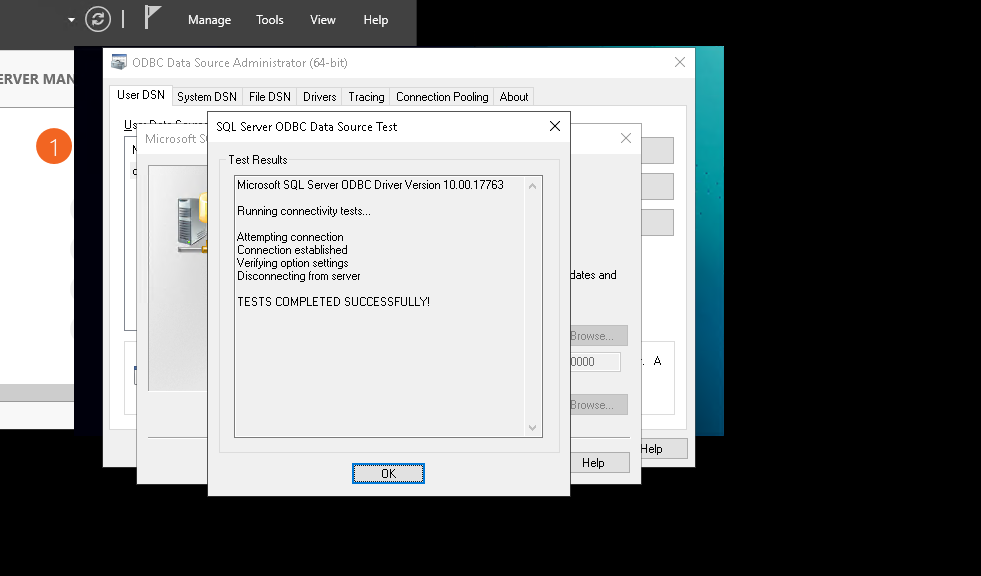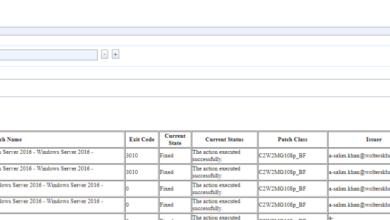
Securely Manage ATMs Using BigFix
Securely manage automatic teller machines using BigFix: It sounds like a techy challenge, right? But ensuring the security of ATMs is crucial, and BigFix offers a powerful solution for managing and securing these critical financial access points. This post dives into how BigFix can revolutionize your ATM security posture, from patching and updating software to implementing robust security policies and monitoring system health.
Get ready to explore a world where your ATMs are not just secure, but proactively protected.
We’ll cover everything from basic deployment strategies for smaller networks to advanced techniques for larger, more complex infrastructures. We’ll also look at best practices for software updates, security hardening, and integrating BigFix with your existing ATM infrastructure. Prepare to be amazed by the possibilities!
BigFix and ATM Security
BigFix, now part of IBM’s Endpoint Manager, offers a robust solution for securing and managing ATM networks. Its ability to remotely deploy patches, configure settings, and monitor the health of individual ATMs makes it a powerful tool in the fight against increasingly sophisticated ATM-targeted attacks. This post will explore how BigFix addresses key security concerns in the ATM environment.
BigFix’s Role in Securing ATM Networks
BigFix acts as a centralized management system, allowing administrators to remotely control and monitor a large number of ATMs. This eliminates the need for on-site visits for many routine tasks, saving time and resources while significantly improving response times to security incidents. Its agent-based architecture allows for efficient communication with each ATM, ensuring consistent policy enforcement and timely updates.
This centralized approach reduces the attack surface by minimizing the number of points of entry for malicious actors. For example, instead of manually patching each ATM, BigFix allows administrators to deploy security patches to the entire fleet simultaneously, minimizing the window of vulnerability.
Vulnerabilities Mitigated by BigFix
ATMs are vulnerable to a variety of threats, including malware infections, unauthorized access, and hardware failures. BigFix helps mitigate these risks in several ways. It allows for the timely deployment of security patches to address known vulnerabilities in the ATM’s operating system and applications. It can also enforce security policies, such as password complexity requirements and access control lists, to prevent unauthorized access.
Furthermore, BigFix facilitates proactive monitoring of ATM health, enabling early detection of potential issues before they escalate into major security incidents. For instance, BigFix can monitor system logs for suspicious activity, alerting administrators to potential intrusions or malware infections.
BigFix and ATM Patch Management
Effective patch management is crucial for ATM security. BigFix streamlines this process by allowing administrators to create and deploy patches to all ATMs simultaneously or in targeted groups. This ensures that all ATMs are running the latest security updates, minimizing the risk of exploitation. BigFix’s ability to track patch deployment status provides administrators with valuable insights into the security posture of their ATM network.
The system can also automate the remediation process, reducing the manual effort required to address vulnerabilities. For example, a critical security patch for a known ATM vulnerability can be deployed to all ATMs within minutes, reducing the overall risk exposure significantly.
Basic BigFix Deployment Strategy for a Small ATM Network
A basic BigFix deployment for a small ATM network might involve the following steps: First, install the BigFix server on a secure, dedicated machine. Next, deploy the BigFix agent to each ATM, configuring it to communicate with the central server. Then, create and deploy relevant security policies, including patch management schedules and security settings. Finally, establish a monitoring system to track the health and security status of each ATM.
This strategy emphasizes centralized management, automated patch deployment, and proactive monitoring, providing a strong foundation for ATM security. For instance, a small bank with 10 ATMs could deploy BigFix, configure it to automatically update antivirus software and operating system patches weekly, and set alerts for any system failures or unusual activity. This proactive approach minimizes the risk of security breaches and operational downtime.
Implementing BigFix for ATM Software Updates

BigFix offers a robust and secure solution for managing software updates across a distributed network of ATMs. Its centralized management capabilities, coupled with its ability to handle diverse hardware and software configurations, make it a powerful tool for streamlining the ATM update process while minimizing downtime and security risks. This approach contrasts sharply with traditional methods, which often involve manual updates or less sophisticated remote management tools, leading to increased operational costs and vulnerability to security breaches.
BigFix Best Practices for Secure ATM Software Deployment, Securely manage automatic teller machines using bigfix
Securely deploying software updates to ATMs using BigFix requires a multi-layered approach. First, a thorough assessment of the ATM environment is crucial, identifying all existing software versions and hardware configurations. This information is used to create targeted update packages, ensuring compatibility and minimizing the risk of deployment failures. Next, robust authentication and authorization mechanisms must be implemented to verify the identity of the BigFix server and the ATMs before any updates are initiated.
Finally, rigorous testing in a controlled environment, mimicking the real-world ATM deployment, is vital to identify and resolve any potential issues before rolling out the update to the entire ATM fleet. This includes rigorous testing of rollback procedures in case of unexpected failures. Furthermore, utilizing digital signatures to verify the authenticity of update packages adds an extra layer of security, preventing malicious code from being deployed.
Creating and Distributing BigFix Packages for ATM Software
Creating BigFix packages for ATM software involves several key steps. First, the software update must be packaged appropriately, often using a format compatible with the ATM’s operating system. This might involve creating a custom installer or using a standard package format like a .zip or .msi file. Then, a BigFix action script is written to deploy this package to the target ATMs.
This script handles the download, installation, and verification of the update. The script also incorporates error handling and logging capabilities to facilitate troubleshooting. Once the package and script are ready, they are uploaded to the BigFix server, and a targeted deployment is initiated, specifying which ATMs should receive the update. BigFix’s ability to filter based on various criteria, such as operating system version or location, allows for precise control over the update process.
Finally, post-deployment monitoring ensures the update was successfully applied and the ATMs are functioning correctly.
BigFix Efficiency Compared to Other ATM Update Methods
Compared to traditional methods like manual updates or using simple remote access tools, BigFix offers significantly improved efficiency. Manual updates are time-consuming, labor-intensive, and prone to errors. Simple remote access tools lack the centralized management and sophisticated reporting capabilities of BigFix. BigFix automates the update process, reducing the time and resources required for deployment. Its ability to manage updates across a large number of ATMs simultaneously dramatically improves efficiency, and its detailed reporting allows for precise tracking of the update status.
Moreover, BigFix minimizes downtime by allowing for targeted and scheduled updates, reducing the disruption to ATM services. The centralized management capabilities also facilitate faster response times in case of emergency updates or security patches. For example, a bank with 1000 ATMs could potentially update its entire fleet within hours using BigFix, compared to weeks or months using manual methods.
Step-by-Step Guide for Updating ATM Firmware Using BigFix
Updating ATM firmware using BigFix requires careful planning and execution. The process should always be thoroughly tested in a non-production environment before deployment to live ATMs. A critical aspect is to ensure a robust rollback plan is in place, allowing for reversion to the previous firmware version in case of failure.
| Step | Description | Time | Potential Issues |
|---|---|---|---|
| 1. Prepare Firmware Package | Create a properly formatted firmware package compatible with the ATM hardware and operating system. This may involve creating a custom installer or using a standard package format. | 1-2 hours | Incompatibility issues with the ATM hardware or operating system. Incorrect packaging of the firmware. |
| 2. Create BigFix Action | Develop a BigFix action script to deploy the firmware package. This includes commands for downloading, installing, and verifying the firmware update, along with robust error handling and logging. | 2-4 hours | Errors in the BigFix script, leading to failed deployments. Incorrect permissions or access rights. |
| 3. Test in a Staging Environment | Thoroughly test the BigFix action and firmware update in a staging environment that mirrors the production ATM environment. This allows for identifying and resolving any issues before deploying to live ATMs. | 4-8 hours | Unexpected behavior or incompatibility issues not detected during earlier phases. Failure of rollback procedures. |
| 4. Deploy to Production ATMs | Deploy the BigFix action to the target ATMs in a phased rollout, allowing for monitoring and troubleshooting during the process. | 1-2 hours (per phase) | Deployment failures on specific ATMs due to hardware or software inconsistencies. Unexpected network issues. |
| 5. Post-Deployment Monitoring | Monitor the ATMs after the update to ensure the firmware is successfully installed and the ATMs are functioning correctly. | Ongoing | Unexpected errors or malfunctions after the firmware update. Need for further patches or updates. |
BigFix for ATM Security Hardening
Securing ATMs is paramount, given their role in handling sensitive financial transactions. BigFix, with its robust capabilities for remote management and patching, provides a powerful solution for implementing and enforcing comprehensive security policies across a distributed network of ATMs. This allows financial institutions to proactively address vulnerabilities and maintain a strong security posture without the need for costly and time-consuming on-site visits for every machine.
Key Security Settings Managed by BigFix on ATMs
BigFix can manage a wide array of critical security settings on ATMs. This includes controlling access permissions, configuring firewall rules, managing user accounts, enforcing strong password policies, and ensuring regular software updates. The granular control offered by BigFix allows for tailored security policies based on the specific needs and risk profile of each ATM location. For instance, ATMs in high-risk areas might require more stringent access controls and more frequent security audits compared to those in less vulnerable locations.
This level of customization is crucial for achieving optimal security while minimizing disruption to ATM operations.
Implementing Security Policies on ATMs via BigFix
Implementing security policies using BigFix involves creating and deploying actions and fixes to target specific ATM configurations. This process begins with identifying the desired security settings and translating them into actionable BigFix commands. These commands can range from simple configuration changes, like disabling unnecessary services, to more complex tasks, such as installing security patches or updating antivirus software. BigFix then uses its agent technology to push these changes to the ATMs, ensuring consistent and uniform security across the entire network.
The process also includes robust monitoring and reporting features, allowing administrators to track the status of policy deployment and identify any potential issues. Detailed logs are maintained to provide a complete audit trail of all security changes.
Enforcing Security Baselines on ATM Systems with BigFix
BigFix enables the enforcement of security baselines on ATM systems by regularly scanning for deviations from pre-defined configurations. These baselines define the acceptable security posture for each ATM, including operating system settings, application configurations, and installed software. BigFix compares the current state of each ATM against the baseline and automatically remediates any discrepancies. This proactive approach ensures that ATMs consistently adhere to the organization’s security standards, minimizing the risk of exploitation.
This is especially important in responding to newly discovered vulnerabilities or changes in the threat landscape, allowing for rapid and automated deployment of countermeasures.
Common ATM Security Vulnerabilities and BigFix Solutions
Effective ATM security requires addressing a range of vulnerabilities. BigFix offers solutions to mitigate many of these risks:
- Vulnerability 1: Outdated Operating Systems and Software: BigFix can automatically deploy operating system and software updates, ensuring ATMs are running the latest versions with the most up-to-date security patches. This prevents attackers from exploiting known vulnerabilities in older software versions.
- Vulnerability 2: Weak Passwords and Access Controls: BigFix can enforce strong password policies, including password complexity requirements and regular password changes. It can also manage user accounts and permissions, restricting access to sensitive system functions to authorized personnel only.
- Vulnerability 3: Unpatched Vulnerabilities: BigFix automatically identifies and deploys security patches, addressing vulnerabilities before they can be exploited by malicious actors. This includes timely deployment of critical security updates from operating system and application vendors.
- Vulnerability 4: Malware Infections: BigFix can deploy and manage antivirus software, ensuring ATMs are protected against malware attacks. It can also perform regular scans and quarantine infected files. Furthermore, BigFix can automate the removal of malicious software.
- Vulnerability 5: Network Security Misconfigurations: BigFix can manage firewall rules, ensuring that only authorized network traffic is allowed to access the ATMs. This prevents unauthorized access and potential attacks. It also allows for the configuration of network segmentation to isolate ATMs from other network systems.
Monitoring and Reporting with BigFix for ATMs

BigFix offers powerful capabilities beyond just software patching and security hardening for ATMs. Its robust reporting and monitoring features provide crucial insights into the security posture and operational health of your entire ATM network, enabling proactive maintenance and rapid response to potential threats. This allows for a significant reduction in downtime and improved overall security.BigFix’s ability to monitor the security status of ATMs is achieved through a combination of agent-based reporting and custom-designed action scripts.
These agents continuously collect data on various aspects of the ATM’s security configuration, software versions, and system events. This data is then centralized and analyzed, offering a comprehensive view of the ATM network’s security landscape.
ATM Security Status Monitoring
BigFix agents deployed on each ATM can be configured to monitor various security parameters, including operating system patch levels, antivirus software status, firewall configurations, and access control settings. Regularly scheduled scans provide up-to-the-minute information on the security posture of each machine. Deviation from predefined security baselines triggers alerts, allowing for immediate remediation. For instance, if an ATM’s antivirus software becomes inactive or a critical OS patch is missing, BigFix automatically generates an alert, notifying administrators of the vulnerability.
Custom Report Generation for ATM Security Events
BigFix allows for the creation of custom reports that track specific ATM security events. These reports can be tailored to highlight critical security incidents, such as failed login attempts, unauthorized access attempts, or suspicious network activity. The reporting engine can be configured to filter and aggregate data, providing administrators with actionable intelligence. For example, a report could show the number of failed login attempts per ATM over a specified period, highlighting potential brute-force attacks.
Another report could track the installation status of security patches across the entire ATM fleet, identifying machines requiring immediate attention.
Real-time Monitoring of ATM Health and Performance
Beyond security, BigFix can also monitor the overall health and performance of ATMs. This includes monitoring CPU usage, memory consumption, disk space, and network connectivity. Real-time monitoring allows for proactive identification of performance bottlenecks and potential hardware failures, preventing costly downtime. By setting thresholds for key performance indicators (KPIs), BigFix can automatically generate alerts when an ATM’s performance deviates from expected levels, enabling prompt intervention.
For instance, a sudden spike in CPU usage could indicate a malware infection, while consistently high disk usage might point to a need for storage upgrades.
Dashboard Visualization of Key ATM Security Metrics
A sample dashboard could include:* Data Points: Number of ATMs with critical vulnerabilities, number of successful and failed login attempts, average CPU utilization, average memory utilization, disk space usage, network latency, antivirus status (active/inactive), number of security patches installed, and the number of security alerts generated.* Chart Types: A geographical map visualizing the security status of ATMs across different locations, using color-coding to represent vulnerability levels (green for secure, yellow for warning, red for critical).
Bar charts showing the number of security incidents per ATM or per location over time. Line graphs displaying CPU and memory utilization trends. Pie charts illustrating the percentage of ATMs with different security patch levels.* Overall Dashboard Design: A clean and intuitive layout, using clear visual cues to highlight critical information. Interactive elements, such as drill-down capabilities, allow for detailed analysis of specific events or ATMs.
The dashboard would be designed for easy navigation and rapid identification of potential problems. The dashboard’s design would follow best practices for data visualization, ensuring that the information is presented in a clear, concise, and easily understandable manner.
Integrating BigFix with Existing ATM Infrastructure

Integrating BigFix into an existing ATM network presents unique challenges due to the geographically dispersed nature of ATMs, their often-limited network connectivity, and the critical security requirements surrounding financial transactions. Successfully implementing BigFix requires careful planning and a phased approach to minimize disruption and maximize security.
Challenges of Integrating BigFix into an Existing ATM Infrastructure
The primary hurdles in integrating BigFix involve the heterogeneous nature of ATM hardware and software, the need for robust security measures, and the potential for network disruptions. Many ATM networks rely on outdated technologies and protocols, making compatibility with BigFix a significant concern. Furthermore, ATMs often operate on limited bandwidth connections, which can impact the speed and reliability of patch deployment and data collection.
The critical nature of ATM operations necessitates stringent security protocols to prevent unauthorized access and manipulation during the integration process. A lack of standardized hardware and software across different ATM manufacturers further complicates the deployment and management of BigFix. Finally, the need to minimize downtime during the integration process requires a well-defined plan and thorough testing.
Strategies for Minimizing Disruption During BigFix Implementation
Minimizing disruption during BigFix implementation involves a phased rollout, rigorous testing, and careful communication. A phased approach allows for testing and refinement in a controlled environment before expanding to a larger scale. This approach might involve initially deploying BigFix to a small subset of ATMs in a non-critical location. Rigorous testing of BigFix actions and policies on representative ATM hardware and software configurations is crucial to prevent unexpected issues during the full deployment.
This includes simulating various network conditions and scenarios to ensure BigFix operates reliably. Clear communication with stakeholders, including ATM vendors, IT staff, and security personnel, is essential to ensure everyone understands the implementation plan and potential impacts. This communication should include detailed timelines, potential disruptions, and contingency plans.
Necessary Network Configurations for BigFix to Manage ATMs Effectively
Effective BigFix management of ATMs requires a well-defined network infrastructure that provides secure communication channels and sufficient bandwidth. This typically involves establishing a dedicated communication path between the BigFix server and the ATMs, often utilizing a combination of VPNs, firewalls, and dedicated network segments to isolate ATM traffic and enhance security. The network should support the reliable transmission of large software updates and data, necessitating sufficient bandwidth and low latency.
Furthermore, security protocols such as TLS/SSL encryption are crucial to protect sensitive data transmitted between the BigFix server and the ATMs. Regular network monitoring and performance analysis are essential to identify and address any potential bottlenecks or security vulnerabilities. Network segmentation can isolate ATM networks from other corporate networks, improving security.
Diagram Illustrating the Interaction Between BigFix, ATMs, and Other Network Components
The diagram depicts a centralized BigFix server communicating with geographically dispersed ATMs through a secure network infrastructure.[Description of Diagram:] The diagram shows a central BigFix server residing in a secure data center. This server connects to a network gateway, which acts as a secure entry point for ATM communications. The gateway is configured with firewalls and intrusion detection systems to protect against unauthorized access.
From the gateway, secure VPN tunnels extend to regional network hubs, each serving a cluster of ATMs. These ATMs are connected to the regional hubs via various network technologies (e.g., dedicated lines, cellular networks). Each ATM maintains a secure connection to the regional hub, allowing for bidirectional communication with the BigFix server. The entire network infrastructure utilizes TLS/SSL encryption to protect data transmitted between all components.
A monitoring system tracks network performance and security events, providing real-time visibility into the network’s health and security status. The diagram also illustrates the flow of software updates and security policies from the BigFix server to the ATMs, and the transmission of status and inventory data back to the server. Each component is labeled clearly to illustrate the relationships and data flow.
This architecture ensures secure and reliable management of ATMs while minimizing the risk of network disruptions and security breaches.
Advanced BigFix Techniques for ATM Security
BigFix offers a powerful suite of tools beyond basic software updates and security hardening for securing ATMs. Leveraging its advanced features allows for a proactive and comprehensive security posture, minimizing vulnerabilities and maximizing operational uptime. This section explores several advanced techniques to achieve a higher level of ATM security using BigFix.
Compliance Checks and Automated Remediation
BigFix’s compliance capabilities are crucial for ensuring ATMs adhere to stringent security policies and regulatory requirements. By creating custom compliance checks, administrators can verify the presence of critical security patches, the correct configuration of firewall settings, and the integrity of system files. Furthermore, BigFix allows for automated remediation actions. If a compliance check reveals a security flaw, BigFix can automatically deploy the necessary patches or configuration changes, significantly reducing the time to remediate vulnerabilities and minimizing the window of exposure.
For example, a compliance check might verify that all ATMs have installed the latest anti-malware signatures; if not, BigFix can automatically push the update to the affected machines.
Vulnerability Scanning and Remediation
Integrating BigFix with vulnerability scanning tools provides a robust approach to identifying and mitigating security risks. The vulnerability scanner can analyze the ATM’s software and hardware for known weaknesses. BigFix then uses this information to create targeted remediation actions, automatically patching identified vulnerabilities. This process significantly reduces the manual effort required for vulnerability management and improves the overall security posture of the ATM network.
For instance, if a scanner detects a critical vulnerability in the ATM’s operating system, BigFix can deploy the relevant security patch to all affected ATMs simultaneously.
Security Certificate Management
Managing security certificates on ATMs is vital for secure communication and data encryption. BigFix can facilitate this process through several approaches. One approach involves using BigFix to deploy and manage certificates directly to ATMs. This method requires careful planning and execution to ensure certificate chain integrity and proper configuration. Another approach is to use BigFix to manage the configuration of certificate stores on ATMs, ensuring that the correct certificates are trusted and available.
The choice between these approaches depends on the specific security requirements and the existing infrastructure. For example, a system could use BigFix to automatically renew certificates before they expire, preventing disruptions in ATM services.
Potential Issues and Solutions
Effective ATM security management with BigFix requires addressing potential challenges. The following table Artikels some common issues, their causes, solutions, and potential impact.
| Issue | Cause | Solution | Impact |
|---|---|---|---|
| Failed Patch Deployment | Insufficient network bandwidth or connectivity issues | Optimize network infrastructure, implement bandwidth throttling, schedule deployments during off-peak hours. | ATM downtime, security vulnerabilities |
| Inconsistent Configuration | Manual configuration changes, lack of centralized management | Utilize BigFix to enforce consistent configurations across all ATMs. | Security vulnerabilities, compliance issues |
| False Positives in Compliance Checks | Inaccurate or outdated compliance rules | Regularly review and update compliance rules to ensure accuracy. | Unnecessary remediation efforts, wasted resources |
| BigFix Agent Failures | Agent crashes, outdated agent versions | Implement robust agent monitoring, automatic updates, and error handling mechanisms. | Inability to manage ATMs, security risks |
Summary
So, there you have it – a comprehensive look at how BigFix can significantly enhance the security of your ATMs. From streamlined software updates and proactive security hardening to real-time monitoring and insightful reporting, BigFix offers a holistic approach to ATM security management. By implementing the strategies and best practices Artikeld in this post, you can significantly reduce your vulnerability to threats and ensure the continued smooth operation of your ATM network.
Remember, a secure ATM network is a happy ATM network!
FAQ Insights: Securely Manage Automatic Teller Machines Using Bigfix
What are the potential costs associated with implementing BigFix for ATM management?
The cost depends on factors like the size of your ATM network, required support level, and any additional features you choose. It’s best to contact BigFix or a certified reseller for a customized quote.
How does BigFix handle compliance requirements for ATM security?
BigFix allows for automated compliance checks against industry standards and regulations. You can configure policies to ensure your ATMs meet specific security baselines and generate reports to demonstrate compliance.
What kind of training is needed to effectively use BigFix for ATM management?
IBM offers various training resources and certifications for BigFix. The level of training required will depend on your team’s existing skills and the complexity of your deployment.
Can BigFix integrate with other security tools in my existing infrastructure?
Yes, BigFix offers various integration points with other security information and event management (SIEM) systems and other security tools, allowing for a comprehensive security ecosystem.





